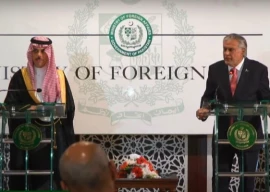
Pakistan has resumed the fencing of its border with Afghanistan after a brief interruption. The project was initiated at the start of this year but was temporarily suspended. The Afghan government has rejected the fencing along the Durand Line as it believes it would legalise it as an international border. They have even warned of military action if diplomacy fails to resolve the issue. But Islamabad has dismissed these objections, since Pakistan inherited the problem when it gained independence from Britain in 1947.
India, too, has built about a 750-km long barrier along the Line of Control, which is not an international border, with Pakistan. The status of the LoC is completely different from the Durand Line. The ceasefire line was renamed as the LoC after the Simla Agreement in 1972. Thus, it is not an internationally recognised legal border. The Durand Line agreement was signed between Afghan King Amir Abdur Rahman Khan and former British governor for India Sir Henry Mortimer Durand in 1893 and Pakistan as a successor of British India respected all the agreements signed earlier.
The rules of international law concerning cases of state succession were codified within the framework of the UN in the 1978 Vienna Convention on Succession of States in Respect of Treaties and the 1983 Vienna Convention on Succession of States in Respect of State Property, Archives and Debts. The article 2(B) of the 1978 convention defined succession as, “succession of state is the replacement of one state by another in the responsibility of international relation of territory.” In other words, the newly created state is under the legal obligations and responsibility of respecting the international relations of the territory they received. Out of the many responsibilities, the prominent of all is the treaty obligation, especially the ones related to the outer boundaries which remain unchanged despite universal succession over a defined territory. Article 11 clearly says, “a succession of states does not as such affect: (a) a boundary established by a treaty; or (b) obligations and rights established by a treaty and relating to the regime of a boundary.” Thus, the Durand Line’s respect and recognition is a legal responsibility of both Kabul and Islamabad. It is Pakistan which has gone through the state succession process and it is respecting the obligation of the former, while in Afghanistan it was simply a government succession.
Fencing is a common practice in today’s world, especially after 9/11. For instance, Israel built a 712km security barrier to stop Palestinians from entering. Although the Palestinian Authority filed a case for an advisory opinion in the International Court of Justice and the court declared it illegal but the wall remained, acting as a barrier in the prosperity and developments of the occupied areas of the West Bank. The US, led by Donald Trump, wants to build a 30-foot high wall on its border with Mexico to stop illegal migrants from that country. The US shares a 2,000-mile border with Mexico and so far, nearly 700-miles of fencing is already completed, much of it was done during Barack Obama’s presidency, as part of the Secure Fence Act of 2006. India has fenced almost half of the 4,096km border with Bangladesh, aiming to stop infiltration and smuggling of cattle and fake Indian currency. North and South Korea share a 250km demilitarised zone but the most heavily militarised borders are equipped with sensors, landmines and heavy artillery. In 2014, Saudi Arabia also built a 900km fence and electronic surveillance system along its borders with Iraq.
Pakistan has suffered a lot due to terrorism. More than 100,000 Pakistani civilians and soldiers have lost their lives. The fencing would definitely lower the intensity of terrorist activities and help to address the mutual terrorism concerns. It will prevent illegal crossings and terrorist infiltration from both sides of the border.
Published in The Express Tribune, June 25th, 2017.
Like Opinion & Editorial on Facebook, follow @ETOpEd on Twitter to receive all updates on all our daily pieces.


















1713272658-0/Copenhagen-fire-(1)1713272658-0-270x192.webp)






















COMMENTS (1)
Comments are moderated and generally will be posted if they are on-topic and not abusive.
For more information, please see our Comments FAQ